Project Planning Grid
Because of some structural changes at my work, my team was moved to a different department. This new department is full of subject matter experts who are very good at their technical work; however, they do not have much skill in transferring this knowledge to others.
Enter my team!
This week I had to work with one of these experts to prioritize a list of projects she wanted us to work on. As part of the preparation for this meeting, I decided to articulate my method for prioritizing training creation. She found the visual I made very helpful, so I figured I would share it here and explain my thought process.
Eisenhower Matrix
I didn’t invent the Eisenhower Matrix, hence the name, but it was my first introduction to a two-by-two decision-making grid. I learned about it via The 7 Habits of Highly Effective People, which is worth a read.
In short, for each task, you decide if something is or isn’t important, and the same for urgency. By making these two decisions, you create a four-level hierarchy. That hierarchy gives you an action plan. That’s a pretty efficient process, maybe not the most nuanced, but it gets the ball rolling quickly.
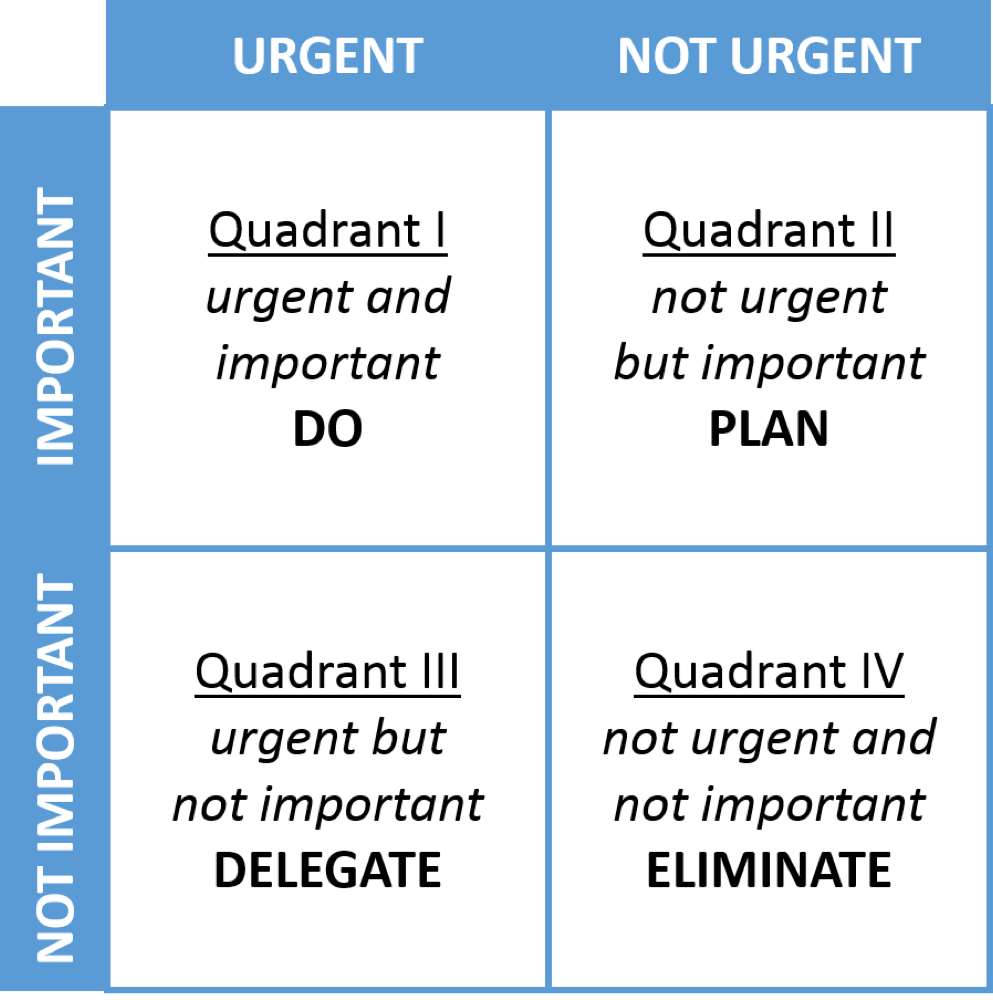
Impact vs. Energy Matrix
In my workflow, urgency is dictated by due dates, and importance is decided by putting the thing in my system so the traditional Eisenhower Matrix didn’t work for me. For many years I have been using a similar two-by-two grid for my personal productivity (actually, it is three by three, but that’s for another post). Instead of Urgency and Importance, I use Impact and Energy. Using these tags in OmniFocus is the critical driver for my Custom Pomodoro Timer via Shortcuts video.
The Impact vs. Energy Matrix helps me decide where to begin when I look at a pile of things that are important enough to do but don’t have a due date.
ISD Project Planning Grid
With years of success using decision-making matrices in both professional and personal productivity, my mind reached for another to help me prioritize this list of new projects at work. Sadly, my trusty Impact vs. Energy Matrix was not quite right.
Enterprise HR software is (charitably) very stable. So the training I make based on this software will likely be applicable for years unless some larger workflow or initiative changes how we are working. There are enough of these initiative updates that I decided to replace my Energy axis with Longevity.
Longevity
Since a high-quality ISD project can take a few months to produce, I really don’t want to pour hundreds of hours into something that will be obsolete shortly after it’s released.
Essential short-term projects certainly come up and get done because that’s the job, but they will probably won’t end up in a portfolio.
The lifespan of a training solution influences how I approach the project so much that it is a first-round question in my mind.
Impact
I have been heavily influenced by a way of thinking expressed by Tim Ferriss in The 4-Hour Work Week. You can get the details in My Perspective on Frogs post, but in short, I prioritize big wins. You don’t have to string too many big wins together before you start changing things for the better.
In my training mind, I see the impact being measured by not only how many people will benefit, but also the size of the benefit. I could help 1000 people with a simple problem or 50 people with a massive problem. Impact can come in either form or best-case scenario, both.
Either way, I always want to know the impact a project will have once completed.
Quadrants
Green- Large Impact, Long Lifespan
These are my favorite projects; I can dig into the problem, come up with a creative solution, and execute it at a high level. We are talking a deep needs analysis, custom graphics, polished videos, the works!
I don’t hesitate to spend the time creating all of these precise and beautiful artifacts because I know the work will help people for a long time to come, and the impact will be substantial.
Yellow- Large Impact, Short Lifespan
These projects are important for their impact, but their short lifespan limits how much time and effort I am willing to commit.
This might be a high-quality video training instead of a custom asynchronous course with interactive elements, graphics, and video.
However it plays out, the resource needs whatever professional touches I can deliver quickly.
Orange- Small Impact, Long Lifespan
As you can tell, I am a sucker for impact, so small impact projects are on the bottom half of the hierarchy. The long lifespan helps counterweight the impact part of the equation but not by much.
The silver lining of this level is that it provides a place to experiment with my tools and techniques. It is a relatively safe space to try something new that I am confident will work but I have not done before.
While the green and yellow projects provide plenty of opportunities to practice and refine my skills, these orange ones allow me to build new ones.
Red- Small Impact, Short Lifespan
Sometimes it might not be possible, but I try to avoid these projects if I can.
I don’t mean to say I pretend they don’t exist. Instead, I will try to find a solution that is not developing a training. It might be a 30-minute coaching call or a redirect to an existing job aid.
Regardless, these are the bottom-of-the-barrel projects that only get serious attention if all other levels of projects are complete.
Ecamm Live
Quick shout out to my secret weapon for meetings/trainings. Ecamm Live.
I made the graphics for my planning grid in Adobe Illustrator and left a big chunk of negative space on the right side because I presented this slide will Ecamm and put myself on camera in the area to the right. I am planning on making more posts/videos about Ecamm. Since I am sharing my graphics in this post, I wanted to explain the unused space.
Conclusion
There will always be external factors that influence when I work on which projects. Left to my own vices, this post explains how I look at projects in May of 2022.
I keep reflecting and iterating as I gain experience and we will see how things change over time. I will also get better by hearing your thoughts!
Do you deal with managing creative projects, training industry, or otherwise? I would love to hear how you triage your projects in the comments below!


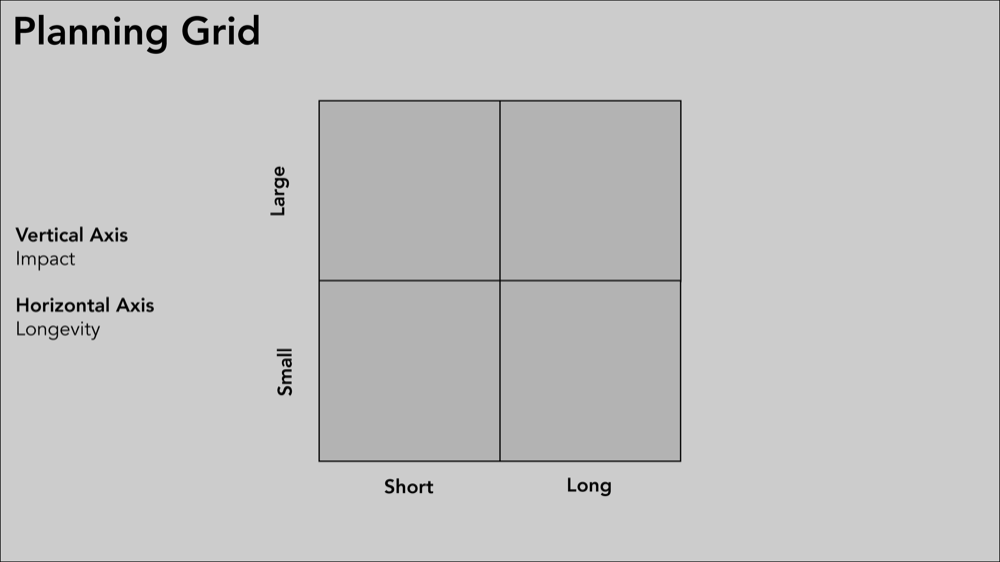
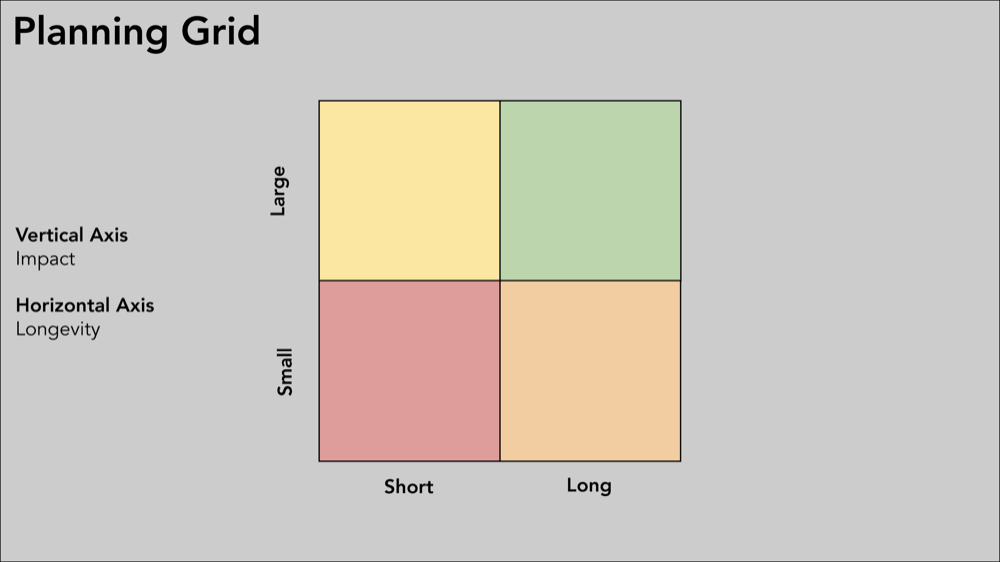
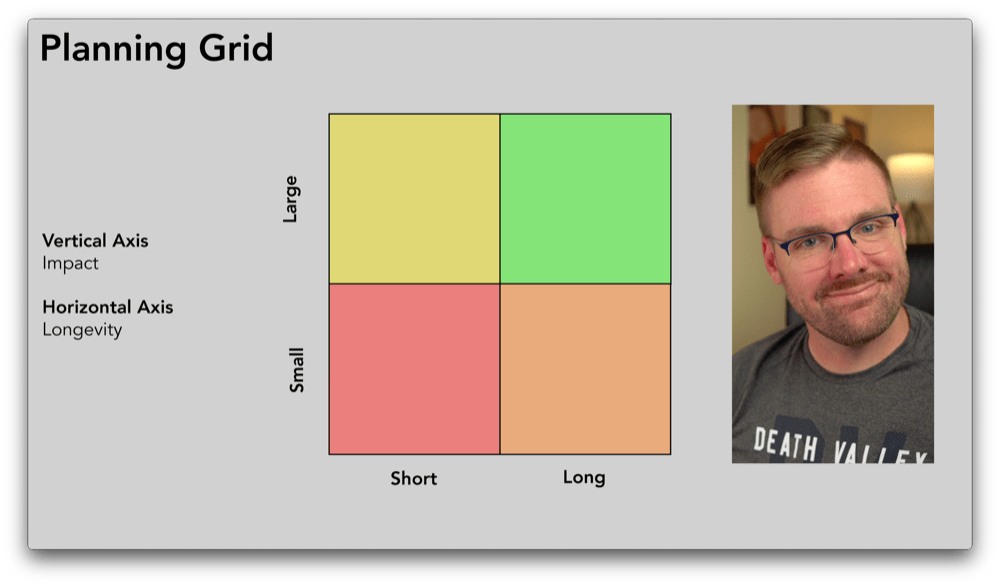







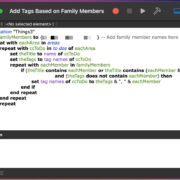


Leave a Reply
Want to join the discussion?Feel free to contribute!